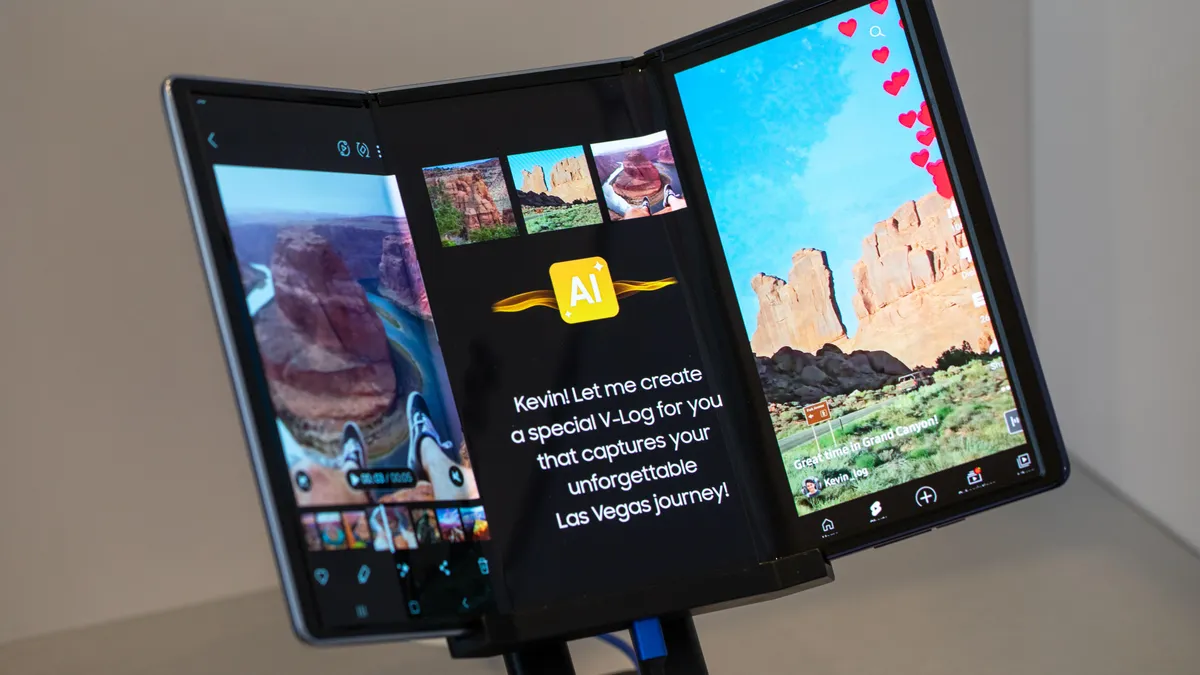NEW YORK — NEW YORK (AP) — Robot umpires are coming to the big leagues in 2026 after Major League Baseball’s 11-man competition committee on Tuesday approved use of the Automated Ball/Strike System.
ABS will be introduced in the form of a challenge system in which the human umpire makes each call, which can be appealed to the computer. Robot umpires have been tested in the minor leagues since 2019, with recent testing done at Triple-A since 2022, MLB spring training this year and at this summer’s All-Star Game in Atlanta.
Here’s what to know about MLB’s robot umps.
Stadiums are outfitted with cameras that track each pitch and judge whether it crossed home plate within the strike zone. In early testing, umpires wore ear buds and would hear “ball” or “strike,” then relay that to players and fans with traditional hand signals.
The challenge system adds a wrinkle. Human umps call every pitch, but each team has the ability to challenge two calls per game. Teams that burn their challenges get one additional challenge in each extra inning. A team retains its challenge if successful, similar to the regulations for big league teams with video reviews, which were first used for home run calls in August 2008 and widely expanded to many calls for the 2014 season.
Only a batter, pitcher or catcher may challenge a call, signaling with the tap of a helmet or cap; and assistance from the dugout is not allowed. A challenge must be made within 2 seconds, and the graphic of the pitch and strike zone is shown on the scoreboard and broadcast feed. The umpire then announces the updated count.
MLB estimates the process averages 17 seconds.
A Hawk-Eye pose-tracking system of cameras tracks pitches and whether they are within a strike zone based on the height of each batter, who is measured without shoes before a team’s first test game. MLB estimated the calibration process at less than one minute for each player.
While the strike zone actually called by big league umpires tends to be oval in shape, the ABS strike zone is a rectangle, as in the rule book.
Developing a consensus on what a computer strike zone should be has been an issue.
MLB has changed the shape of the ABS strike zone several times.
It started with a 19-inch width in 2022, then dropped it to 17 inches — matching the width of home plate. Narrowing the strike zone led to an increase in walks and only small changes in strikeout rates.
The top of the strike zone was 51% of a batter’s height in 2022 and 2023, then raised to 53.5% in 2024 after pitchers complained. The bottom of the strike zone has been 27% since 2022 after initially being set at 28%. A batter’s stance is not taken into account.
ABS makes the ball/strike decision at the midpoint of the plate, 8 1/2 inches from the front and 8 1/2 inches from the back. The contrasts with the rule book zone called by umpires, which says the zone is a cube and a strike is a pitch that crosses any part. Big league umpires call roughly 94% of pitches correctly, according to UmpScorecards.
ABS, which utilizes Hawk-Eye cameras, has been tested in the minor leagues since 2019. The independent Atlantic League trialed the system at its 2019 All-Star Game and MLB installed the technology for that’s year Arizona Fall League of top prospects. The ABS was tried at eight of nine ballparks of the Low-A Southeast League in 2021, then moved up to Triple-A in 2022.
At Triple-A at the start of the 2023 season, half the games used the robots for ball/strike calls and half had a human making decisions subject to appeals by teams to the ABS.
MLB switched Triple-A to an all-challenge system on June 26, 2024, then used the challenge system this year at 13 spring training ballparks hosting 19 teams for a total of 288 exhibition games. Teams won 52.2% of their ball/strike challenges (617 of 1,182) challenges.
At this year’s MLB All-Star Game, four of five challenges of plate umpire Dan Iassogna’s calls were successful.
Success rate have hovered around 50% in the minors. At Triple-A this season, the success rate dropped to 49.5% from 50.6%. Defenses — usually catchers — have been more successful, winning 53.7% of challenges compared to 45% by batters. Challenges increased to 4.2 from 3.9 per game through Sunday.
in 2024 at Triple-A, just 1.6% of first pitches were challenges, but the figure increased to 3.9% for two-strike pitches, 5.2% for three-ball pitches and 8.2% for full counts.
Challenge percentages were higher later in the game. While 1.9% of pitches were challenged in the first three innings, 2.5% were challenged from the fourth through the sixth, 2.8% in the seventh and eighth and 3.6% in the ninth.
___
AP MLB: https://apnews.com/hub/MLB








